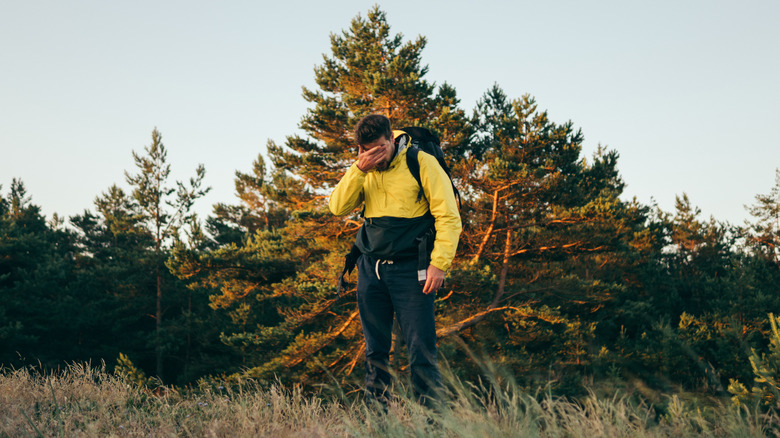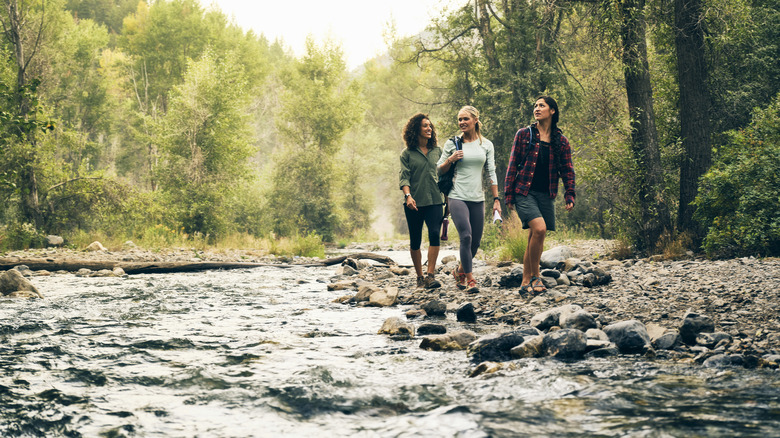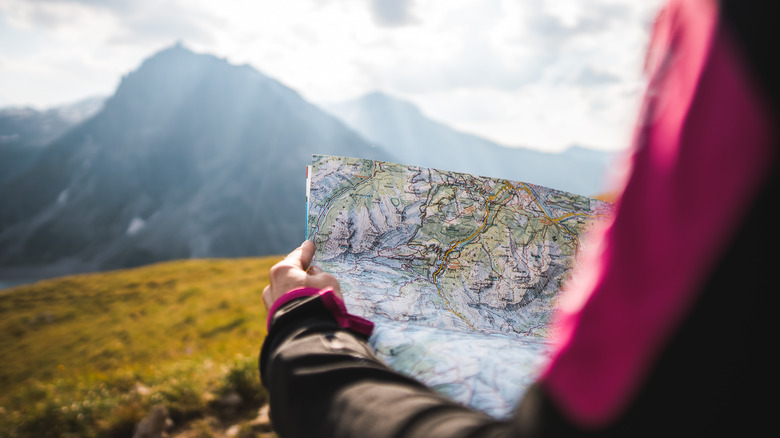How To Use A River If You Get Lost In The Woods
Although it's never anyone's goal to get lost when venturing out into the wilderness, it can happen unexpectedly — even to experienced hikers. Because of this, it's important to have a plan and know what you would do if you were to become lost in the woods. According to the National Forest Service, the first thing you should do is stop moving and stay calm so you can keep a clear head and make good decisions. Then, once you are calm, you can try to retrace your steps and look for landmarks. If you cannot find your way back while retracing your steps, as a last resort, you can use a river to help find your way out of the woods and back to civilization. However, when using a river for navigation, it is important to keep a few things in mind.
Firstly, when lost, you should always follow a river downstream. Downstream is the best option because small rivers and streams often lead to larger waterways where you are more likely to find towns and cities. If you follow a river upstream, you take the risk of the river splitting into two smaller rivers and then agonizing about which branch to follow. Plus as a river gets smaller, you are less likely to find civilization near it. Therefore, you should only follow a river upstream if you see clear signs of civilization in that direction.
Other reasons why downstream is best
Besides the fact that the river may split or get smaller while following it upstream, there are a few other reasons to walk downstream. The first is that it is often a less difficult journey. Water likes to take the easiest path and tends to travel downhill with the ultimate goal of reaching the ocean. This means that if you follow a river downstream, you will likely be walking downhill most of the way even if you don't realize it. In survival situations, walking downhill is recommended to help you conserve energy and calories until you are safe. Plus, most towns and cities tend to be downhill from mountainous or hilly regions.
However, while following a river downstream may seem easy on paper, the truth is that walking next to a river in the woods can involve slippery rocks and rough terrain. Because of this, you can try maintaining a distance of around 100 feet from the river so that you can still keep it in your sight but have less risk of slipping or falling. Keeping your distance from the rushing water will also decrease your chances of running into wildlife or meeting a large cliff that you will need to scramble down.
Other ways to improve your odds
While lost in the woods and following a river to try and find your way, there are a few other things you can do to help improve your odds. Firstly, while walking, always be on the lookout for signs of people whether that is human footprints or manmade items. If you see signs of the recent presence of other people, keep following the river while periodically making loud noises or blowing a whistle to try and get the attention of anyone within earshot. If it is safe to do so, you can also try lighting a signal fire at night and making your camp as visible as possible.
Another good option is to keep an eye out for high places that can serve as lookout points. If you see a hill that could give you a good view of your surroundings and isn't too strenuous to climb, it may be worth getting up high for a few minutes to try and see any signs of civilization nearby. However, while doing this, you should make sure not to venture too far and always keep the river in sight.


